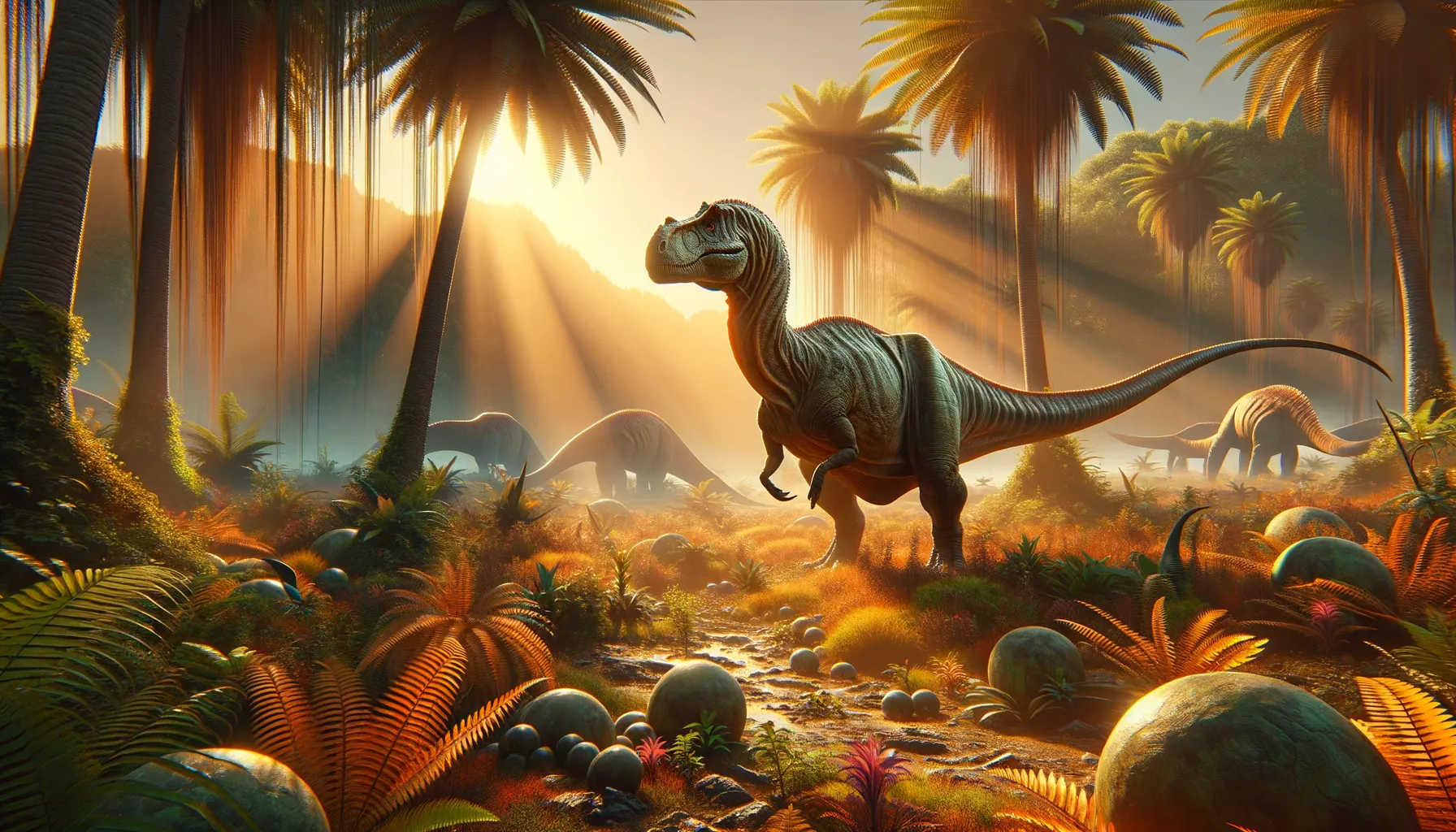
Orthogoniosaurus
An enigmatic member of the Cretaceous era.
Period
Cretaceous
Length
Estimated to have been around 6 meters.
Height
Data is unavailable due to fossil limitations.
Weight
Unknown due to limited fossil evidence.
Orthogoniosaurus is a poorly understood dinosaur known from limited fossil evidence discovered in India. Little definitive information exists about this dinosaur, with only a few teeth available for study. From these remains, researchers have inferred some possible characteristics, although much of its biology, behavior, and ecology remain speculative. This dinosaur lived during the Cretaceous period, a time when the planet was warm, and many new species of plants and dinosaurs were evolving.
Diet
Orthogoniosaurus is speculated to have been a carnivore, as suggested by the structure of its teeth. However, conclusive evidence regarding its specific dietary habits is lacking.
Hunting
Given its classification, it might have preyed on smaller dinosaurs or animals. Its hunting strategies remain speculative due to the scarcity of fossil evidence.
Environmental challenges
During the Cretaceous period, dinosaurs faced shifting climates and changing ecosystems as continents drifted. Orthogoniosaurus had to adapt to evolving prey and possibly changing landscapes. The competition for resources with other carnivorous dinosaurs might have also posed challenges.
Speed
Not much is known about its speed.
Lifespan
Lifespan details are largely unknown.
First discovery
Discovered in 1933 in India.
Fun Facts
- Orthogoniosaurus is a genus of dinosaur that lived during the Late Cretaceous period, about 70 million years ago.
- The name 'Orthogoniosaurus' means 'right angle lizard,' but not much is known about its appearance beyond what little fossil evidence there is.
- This dinosaur is known primarily from a single fossil tooth discovered in the Assam region of India.
- Due to the limited fossil evidence, scientists are unsure of which dinosaur family Orthogoniosaurus actually belongs to.
- Orthogoniosaurus might have been a meat-eater, indicated by the sharp tooth that was discovered.
- The tooth that identifies Orthogoniosaurus was found in the same region where other, more well-known dinosaurs have been unearthed.
- Despite its enigmatic features, Orthogoniosaurus helps scientists understand the diversity of dinosaur species that once roamed the Indian subcontinent.
Growth and Development
Without a complete fossil record, understanding the growth rate of Orthogoniosaurus is difficult. Like other dinosaurs, it likely experienced significant growth during its early years. Developmental patterns might have depended on diet and environmental conditions.
Habitat
The sparse remains suggest it lived in what is now India, which during the Cretaceous period, might have been a warm, humid environment. This habitat could have been rich in vegetation and varied prey, providing ample resources for a carnivorous dinosaur.
Interaction with other species
Orthogoniosaurus likely coexisted with multiple dinosaur species, competing for resources. Its interactions would have been typical of carnivores, potentially involving hunting or scavenging. Cooperative or social interactions are purely speculative given the lack of detailed fossils.
Natural lifespan
Its natural lifespan remains unknown due to limited evidence.
Reproduction
Reproductive habits remain speculative, though it likely laid eggs like other dinosaurs of its time. The nesting behavior or parental care cannot be determined due to insufficient evidence from the fossil record.
Social behaviour
Due to the lack of fossil evidence, its social behavior remains uncertain. It could have been a solitary hunter, though like many theropods, pack behavior can't be completely ruled out. Social interactions are largely hypothetical without further discoveries.
Fossil locations
Orthogoniosaurus fossils have primarily been found in India. The paucity of remains makes it challenging to map a broader distribution. Additional fossils might be located in regions with similar geological formations.
